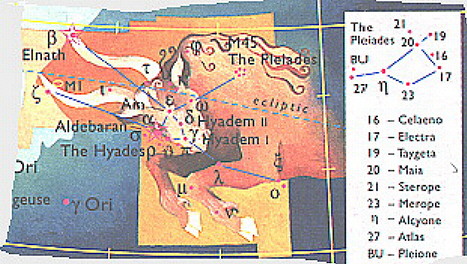|
 International Team
International Team

XMM-Newton's and Chandra's sensitivity to the 1-10 keV band has revealed quite deeply embedded sources with surprisingly hot (up to 100 MK) plasma (Imanishi et al. 2001, Preibisch & Zinnecker 2001). The increased X-ray activity accompanies strong accretion and outflow activity. Models attempting to relate X-ray energy release with youth, rotation, and accretion often involve star-disk magnetic fields (e.g., Hayashi et al. 1996, Shu et al. 1997, Montmerle et al. 2000). A critical test of the role of accretion and rotation is possible by studying evolutionary series of well-characterized pre-stellar cores, protostars and T Tau stars. Given the large age spread of TMC (1E5-1E7 yr), such age sequences are available (Onishi et al. 2002, Hogerheijde & Sandell 2000, Motte & Andre 2001). The TMC contains at least 150 well-studied protostars and T Tau stars (Kenyon & Hartmann 1995). Our data will address the unsolved problem of whether rotation directly influences the efficiency of the magnetic stellar dynamo that regulates the magnetic field production. TMC offers the advantage that rotation and accretion rates of many objects are well known (Muzerolle et al. 2001, Briceno et al. 2002).
BDs have emerged as critical elements in the picture of low-mass star formation. Their formation process is unclear, however; they may evolve in isolation from low-mass protostellar cores (Low & Lynden-Bell 1976) or they may grow in cloud fragments around more massive protostars, eventually being ejected by dynamical interactions (Reipurth & Clarke 2001). A deficiency of BDs has been reported for TMC (Briceno et al. 2002), raising fundamental questions on the uniqueness of the substellar "initial mass function". The CFHT survey aims at uncovering the little studied < 0.3M_sun stellar and substellar population in TMC. X-rays may then provide detections even for optically extincted BDs. Steady X-ray emission has been detected from young BDs (Neuhäuser & Comeron 1998, Imanishi et al. 2001b, Preibisch & Zinnecker 2001, Feigelson et al. 2002, Mokler & Stelzer 2002), but its origin remains a mystery. The absence of radiative cores in the lowest-mass stars and BDs argues against a conventional alpha-Omega dynamo. However, analogies between BDs and T Tau stars have been reported, such as circumstellar disks (Natta et al. 2002). Testing formation scenarios and deriving the substellar IMF define central objectives of the XMM-Newton and the accompanying CFHT survey.
Bipolar molecular outflows and jets accompany accretion processes onto protostars. The ejection phase appears to be fundamentally related to the accretion process and the presence of magnetic fields in the inner star-disk region. Previous X-ray detections of protostellar jets and of Herbig-Haro objects (Pravdo et al. 2001, Favata et al. 2002, Bally et al. 2003) have given evidence for the formation of shocks. Such X-rays may further photoionize envelope, jet, and disk material, thus inducing magnetic coupling between disks and outflows that control disk dissipation and planet formation (Shang et al. 2002). Our TMC fields contain some of the finest and closest jets, including a total of 36 jet-driving sources.
X-rays from the central star may irradiate and ionize the circumstellar disk (Glassgold et al. 2000), coupling its material to the ambient magnetic field. Two effects are expected: (1) Excitation of a 6.4 keV fluorescence Fe line. Such has been observed during a strong flare in a Class I protostar (Imanishi et al. 2001), but it is the only example known so far. We expect that our large sample will exhibit other cases with which we will study the geometry of the X-ray emitting regions ("lamp post" illumination at high latitudes). (2) Change in chemical abundance of species like HCO^+. This has never been observed so far, but the relevant accretion disk chemistry starts to be addressed in detail with interferometers (see, e.g., Guilloteau et al. 1999). We expect that our large statistics will allow us to look for correlations between specific molecules and radicals in disks and the X-ray characteristics of the central star. New information from Spitzer and from millimeter work will be considered for the relevant science.
Variable X-ray emission may indicate time-varying accretion shocks. Accretion-stream "shadowing" of the X-ray source may additionally modulate the observed X-rays (Favata et al. 2003). The accretion disk may also disturb large-scale magnetospheres so as to produce large scale reconnection events (Hayashi et al. 1996). These mechanisms may lead to fundamentally different behavior in protostars compared to evolved stars where solar-like coronal flares may dominate (e.g., Skinner et al. 1997). Magnetic flares are important sources of plasma heating, high-energy radiation and accelerated particles. They probe the magnetic structure around the stars (magnetic field strength, density) not accessible otherwise. Accelerated protons and ions may alter the isotopic composition of solid material in the disk (Feigelson et al. 2002). XMM-Newton's high sensitivity will be ideal to study variability issues among a large sample and model energy release physics in great detail.
The gas-to-dust ratio (G/D) in interstellar matter is a key parameter for star formation, but the values in use were derived from the large-scale low-extinction A_V ~ few mag) atomic interstellar medium. Their applicability to high-extinction molecular+dust star-forming clouds (A_V ~ tens of mag) is unproven and potentially introduces significant errors to cloud modeling since it governs opacities and radiative transfer during collapse. Vuong et al. (2003) have recently pioneered G/D measurements by comparing X-ray absorption (by gas) and infrared extinction (by dust) in dense molecular clouds up to A_V = 45. They found G/D deviations, and also showed them to be a sensitive tracer of cloud metallicity and dust grain size. However, their results rely on a single XMM-Newton field in rho Oph. The TMC offers a large number of absorbed stars to probe variations of G/D on spatial scales of up to ten degrees. The large size of TMC cloud cores enables radial G/D measurements and possible metallicity gradients as unique tracers of the elemental and chemical evolution of molecular cores.

|